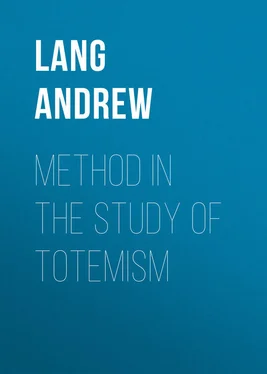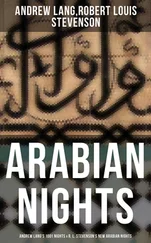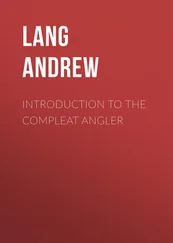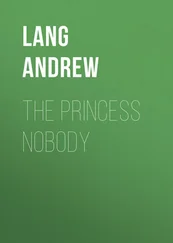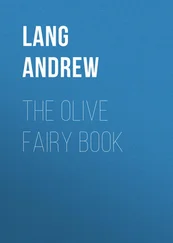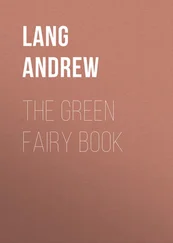Andrew Lang - Method in the Study of Totemism
Здесь есть возможность читать онлайн «Andrew Lang - Method in the Study of Totemism» — ознакомительный отрывок электронной книги совершенно бесплатно, а после прочтения отрывка купить полную версию. В некоторых случаях можно слушать аудио, скачать через торрент в формате fb2 и присутствует краткое содержание. Жанр: foreign_antique, foreign_prose, на английском языке. Описание произведения, (предисловие) а так же отзывы посетителей доступны на портале библиотеки ЛибКат.
- Название:Method in the Study of Totemism
- Автор:
- Жанр:
- Год:неизвестен
- ISBN:нет данных
- Рейтинг книги:4 / 5. Голосов: 1
-
Избранное:Добавить в избранное
- Отзывы:
-
Ваша оценка:
- 80
- 1
- 2
- 3
- 4
- 5
Method in the Study of Totemism: краткое содержание, описание и аннотация
Предлагаем к чтению аннотацию, описание, краткое содержание или предисловие (зависит от того, что написал сам автор книги «Method in the Study of Totemism»). Если вы не нашли необходимую информацию о книге — напишите в комментариях, мы постараемся отыскать её.
Method in the Study of Totemism — читать онлайн ознакомительный отрывок
Ниже представлен текст книги, разбитый по страницам. Система сохранения места последней прочитанной страницы, позволяет с удобством читать онлайн бесплатно книгу «Method in the Study of Totemism», без необходимости каждый раз заново искать на чём Вы остановились. Поставьте закладку, и сможете в любой момент перейти на страницу, на которой закончили чтение.
Интервал:
Закладка:
Andrew Lang
Method in the Study of Totemism
METHOD IN THE STUDY OF TOTEMISM
Is there any human institution which can be safely called "Totemism"? Is there any possibility of defining, or even describing Totemism? Is it legitimate – is it even possible, with due regard for "methodology" and logic – to seek for the "normal" form of Totemism, and to trace it through many Protean changes, produced by various causes, social and speculative? I think it possible to discern the main type of Totemism, and to account for divergences.
Quite the opposite opinion appears to be held by Mr. H. H. Goldenweizer in his "Totemism, an Analytic Study." 1 1 Journal of American Folk-Lore , April-June, 1910.
This treatise is acutely critical and very welcome, as it enables British inquirers about totemism to see themselves as they appear "in larger other eyes than ours." Our common error, we learn, is this: "A feature salient in the totemic life of some community is seized upon only to be projected into the life of the remote past, and to be made the starting-point of the totemic process. The intermediary stages and secondary features are supplied from local evidence, by analogy with other communities, or 'in accordance with recognised principles of evolution' [what are they?] and of logic. The origin and development, thus arrived at, are then used as principles of interpretation of the present conditions. Not one step in the above method of attacking the problem of totemism is logically justifiable." 2 2 J. A. F. p. 280
As I am the unjustifiable sinner quoted in this extract, 3 3 Secret of the Totem , p. 28.
I may observe that my words are cited from a harmless statement to the effect that a self-consistent "hypothesis," or "set of guesses," which colligates all the known facts in a problem, is better than a self-contradictory hypothesis which does not colligate the facts.
Now the "feature salient in the totemic life of some communities," which I "project into the life of the remote past," and "make the starting-point of the totemic process" is the totemic name, animal, vegetable, or what not, of the totem-kin.
In an attempt to construct a theory of the origin of totemism, the choice of the totemic name as a starting-point is logically justifiable, because the possession of a totemic name is, universally , the mark of a totem-kin; or, as most writers prefer to say, "clan." How can you know that a clan is totemic, if it is not called by a totemic name? The second salient feature in the totemic life of some communities which I select as even prior to the totemic name, is the exogamy of the "clans" now bearing totemic names.
To these remarks Mr. Goldenweizer would reply (I put his ideas briefly) there are (1) exogamous clans without totemic names; and there are (2) clans with totemic names, but without exogamy.
To this I answer (1) that if his exogamous clan has not a totemic name, I do not quite see why it should be discussed in connection with totemism; but that many exogamous sets, bearing not totemic names, but local names or nicknames, can be proved to have at one time borne totemic names. Such exogamous sets, therefore, no longer bearing totemic names, are often demonstrably variations from the totemic type; and are not proofs that there is no such thing as a totemic type.
Secondly, I answer, in the almost unique case of "clans" bearing totemic names without being exogamous, that these "clans" have previously been exogamous, and have, under ascertained conditions, shuffled off exogamy. They are deviations from the prevalent type of clans with totemic names plus exogamy. They are exceptions to the rule, and, as such, they prove the rule. They are divergences from the type, and, as such, they prove the existence of the type from which they have diverged.
So far I can defend my own method: it starts from features that are universal, or demonstrably have been universal in totemism. There is "an organic unity of the features of totemism," – of these two features, the essential features.
Lastly, Mr. Goldenweizer accuses us "Britishers," as he calls us, of neglecting in our speculations the effects of "borrowing and diffusion, of assimilation and secondary associations of cultural elements, in primitive societies." 4 4 J. A. F. p. 281.
This charge I do not understand. There has been much discussion of possibilities of the borrowing and diffusion and assimilation of phratries, exogamy, and of totemic institutions; and of "ethnic influences," influences of races, in Australia. But the absence of historical information, the almost purely mythical character of tribal legends (in North-West America going back to the Flood, in Australia, to the "Dream Time"), with our ignorance of Australian philology, prevent us in this field from reaching conclusions.
(Possibly philologists may yet cast some light on "ethnic influences" in Australia. The learned editor of Anthropos , Père Schmidt, tells me that he has made a study of Australian languages and believes that he has arrived at interesting results.)
Mr. Goldenweizer represents, though unofficially, the studies of many earnest inquirers of North America, whether British subjects, like Mr. Hill Tout, or American citizens such as Dr. Boas. They vary, to be sure, among themselves, as to theories, but they vary also from British speculators. They have personally and laboriously explored and loyally reported on totemism among the tribes of the north-west Pacific coast and Hinterland ; totemism among these tribes has especially occupied them; whereas British anthropologists have chiefly, though by no means solely, devoted themselves to the many varieties of totemism exhibited by the natives of Australia. These Australian tribes are certainly on perhaps the lowest known human level of physical culture, whereas the tribes of British Columbia possess wealth, "towns," a currency (in blankets), rank (noble, free, unfree), realistic art, and heraldry as a mark of rank, and of degrees of wealth.
Mr. Goldenweizer's method is to contrast the North-Western American form of totemism with that prevalent in Central Australia, and to ask, – how, among so many differences, can you discover a type, an original norm? I answer that both in North-Western America and in Central Australia, we find differences which can be proved to arise from changes in physical and "cultural" conditions and from speculative ideas. I have said that in British Columbia the tribes are in a much more advanced state of culture than any Australian peoples, and their culture has affected their society and their totemism. Wealth, distinctions of rank, realistic art, with its result in heraldry as a mark of rank, and fixed residence in groups of houses are conditions unknown to the Australian tribes, and have necessarily provided divergences in totemic institutions. Mr. Goldenweizer replies "that the American conditions are due to the fact that the tribes of British Columbia are 'advanced' cannot be admitted." 5 5 J. A. F. p. 287.
But, admitted or not, it can be proved, as I hope to demonstrate.
II
Mr. Goldenweizer gives what he supposes some of us to regard as "essential characteristics" or "symptoms" of totemism. He numbers five of these "symptoms."
1. An exogamous clan.
2. A clan name derived from the totem.
3. A religious attitude towards the totem, as a "friend," "brother," "protector," &c.
4. Taboos or restrictions against the killing, eating (sometimes touching, seeing) of the totem.
5. A belief in descent from the totem.
Mr. Goldenweizer next, by drawing a contrast between British Columbian and Central Australian totemism, tries to prove, if I understand him, that "the various features of totemism," are, or may be "essentially independent of one another," "historically, or psychologically, or both." 6 6 J. A. F. p. 183.
Интервал:
Закладка:
Похожие книги на «Method in the Study of Totemism»
Представляем Вашему вниманию похожие книги на «Method in the Study of Totemism» списком для выбора. Мы отобрали схожую по названию и смыслу литературу в надежде предоставить читателям больше вариантов отыскать новые, интересные, ещё непрочитанные произведения.
Обсуждение, отзывы о книге «Method in the Study of Totemism» и просто собственные мнения читателей. Оставьте ваши комментарии, напишите, что Вы думаете о произведении, его смысле или главных героях. Укажите что конкретно понравилось, а что нет, и почему Вы так считаете.
